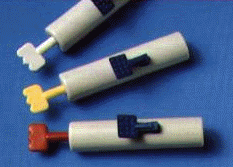 It’s difficult enough for a child to find out that they have diabetes. It’s more difficult for them if they’re forced to stick themselves with needles every day, whether it’s with insulin or testing their blood glucose sugar.
It’s difficult enough for a child to find out that they have diabetes. It’s more difficult for them if they’re forced to stick themselves with needles every day, whether it’s with insulin or testing their blood glucose sugar.
The more they test, the more control children have over their diabetes and blood sugar. They’ll know what to do if their blood sugar level gets high or low. It’s good when children learn how to use lancets and lancing devices to check their blood sugar level.
There are lancets and lancing devices made for children that won’t inflict a lot of pain on them. However, it is important to note that there are some that may not provide enough blood to test their blood sugar level.
When children are using these, they should feel comfortable using them. They may feel slight pain, but that’s fine. As long as it’s quick, then it shouldn’t be so much of a problem.
Some lancing devices are simpler to use than others. Some can be a pain in the rear for children to use. One of the easiest lancet devices to use is called the Gentle-let 1. This lancing device is made to use once for each lancet. This device costs more than some of the other ones. It is unique because it can be used when a child is away from home (before and after care facility, school, or recreational activity).
With the Gentle-let 1, the lancet is built inside of the lancing device. This way, children do not have the task of inserting a lancet. Also, the lancet isn’t removed after pricking your finger. That’s good for them because it prevents accidental injuries. Children can learn to use the Gentle-let 1 in a matter of minutes.
This device can be used in both normal and extra depth. With the normal, you don’t have to dig deep to get an ample amount of blood for testing. However, the extra one is used when children have calloused fingers.
Usually when a person has finished pricking their finger for testing, the lancet is removed and discarded. Some of the lancets use caps to cover them; then there’s some that don’t. There are some that do not need capping. In reality, only adults should have recapping capabilities. Children (especially young children) should not be saddled with that responsibility.
This brings us to another reason the Gentle-let 1 lancing device is advantageous for children is because the safety risk is very low. When the cap is placed back on the lancet, there is very little to no chance of injury risk. The plastic covering keeps the lancet inside not only to protect it, but to protect the child as well. This device can also be used by children that are just learning to use the device.
The fewer children have to do when it comes to the lancing devices, the better. If it’s made simple and easy for them, then they’ll be more eager to use it. Otherwise, they’re setting themselves up for possible accidents or injury. They’ll definitely be satisfied with the Gentle-let 1 lancing device.